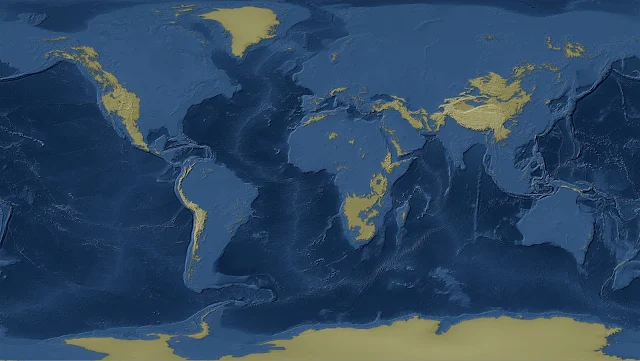If all the ice on Earth were to melt, it could lead to a global sea level rise of approximately 70 meters (230 feet), according to estimates from the Intergovernmental Panel on Climate Change (IPCC).
Under no climate change scenario will there be an increase in the level of the world's oceans by more than 100 meters. However, it's intriguing to examine a hypothetical world map displaying a 1-kilometer increase in global sea level.
The first two maps show what our planet looks like if sea levels were to rise by 1000 meters, how much of the planet's surface would still be above water.
The world with one-kilometre sea-level rise
Political map of the planet with one-kilometre sea-level rise
Even if all the ice on our planet melted, the sea level would only increase by 70 - 100 meters. The maps above are just a bit of fiction.
The world maps with 1000 meters sea-level drop more realistic.
Suppose our planet's magnetic field faded, the atmosphere to be blown out into space. When atmospheric pressure drops low enough, water will start to evaporate taken by the solar wind.
The world with a 1-kilometre sea-level drop
Political map of the earth with 1-kilometers sea-level drop
To learn more about ocean read:
- Knowledge Encyclopedia Ocean!: Our Watery World As You've Never Seen It Before
- Expedition Deep Ocean: The First Descent to the Bottom of All Five of the World's Oceans
Related post:
- What Earth would look like if all the oceans were drained




This post may contain affiliate links. As an Amazon Associate, I earn from qualifying purchases.
Comments
Post a Comment